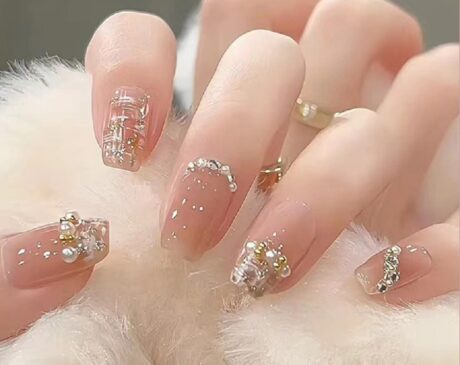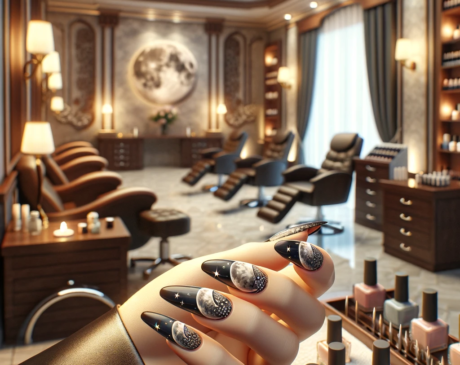Why Do Fake Nails Damage Your Nails?
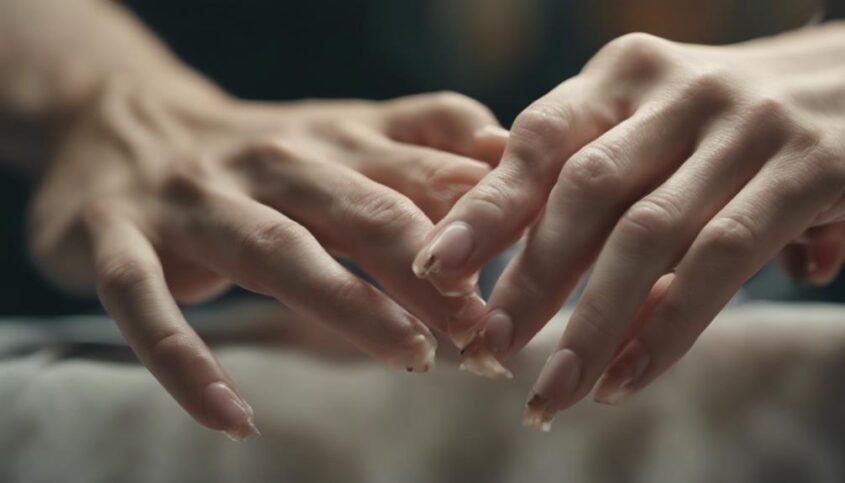
Fake nails damage natural nails due to chemicals in products like nail glue and acrylic powder, weakening nail structure. Lack of oxygen from nail polish and extensions can lead to nail bed weakening and fungal infections. Constant pressure from artificial nails weakens the nail bed over time. Bacterial and fungal infections are risks due to trapped moisture. Incorrect removal methods using harsh chemicals or force can also harm the nail bed. Prioritizing nail care and understanding these factors help maintain nail health. Additional insights into these factors can provide a more comprehensive understanding of nail damage.
Key Takeaways
- Fake nails weaken natural nails by restricting oxygen flow and causing nail bed weakening.
- Chemicals in nail products and incorrect removal methods can damage the nail bed.
- Bacterial and fungal infections are more likely due to trapped moisture under extensions.
- Constant pressure from fake nails can weaken the nail bed over time.
- Prioritizing nail care, using breathable products, and proper hygiene practices help prevent damage.
Chemical Composition of Fake Nails
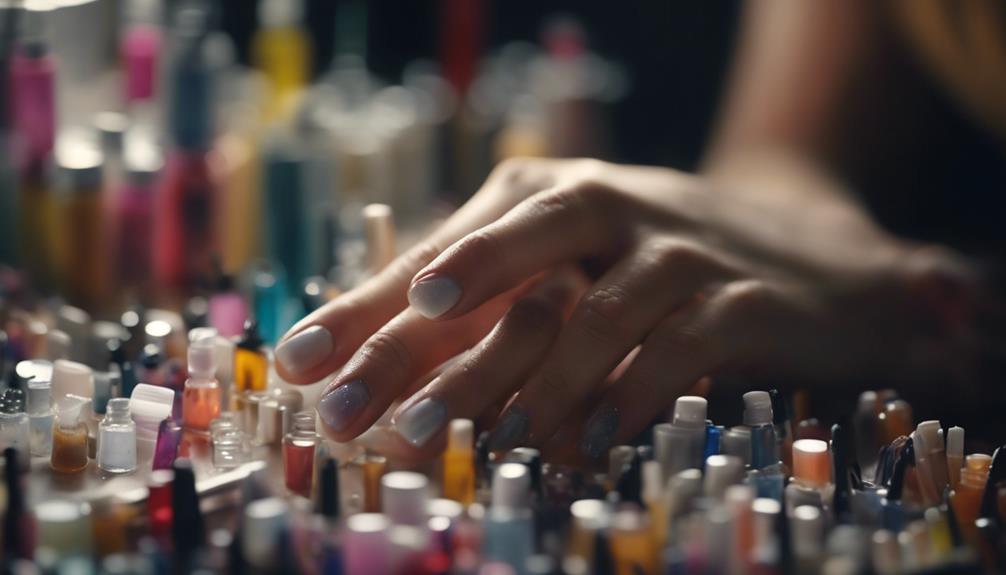
The chemical composition of fake nails plays a significant role in understanding why they can cause damage to natural nails. Nail glue, a key component in the application of fake nails, often contains ethyl cyanoacrylate, which is a strong adhesive that bonds the fake nail to the natural nail. While effective in creating a long-lasting manicure, the removal process can weaken and damage the natural nail if not done properly.
Acrylic powder is another essential element in fake nails. It typically consists of a polymer blend of polyethyl methacrylate (PEMA) and other additives. When mixed with a liquid monomer, this powder forms a dough-like substance that can be shaped into a nail extension. However, the filing process required to shape and refine the nail extension can thin out and weaken the natural nail underneath.
Understanding the composition of nail glue and acrylic powder is crucial in addressing the potential damage that fake nails can cause to natural nails. Innovations in nail technology aim to develop gentler products that minimize harm while still providing the desired aesthetic results.
Lack of Oxygen to Natural Nails
Understanding the implications of prolonged fake nail usage involves considering how the lack of oxygen to natural nails can impact their overall health. The application of nail polish and nail extensions can restrict the flow of oxygen to the nail bed, leading to potential issues. Oxygen deprivation can weaken the natural nail structure, making them brittle and prone to breakage. This lack of oxygen can also create a favorable environment for fungal infections to develop, as fungi thrive in oxygen-deprived areas. Additionally, reduced oxygen levels may cause the nails to appear discolored or yellowed over time.
To mitigate the effects of oxygen deprivation, it is advisable to give the nails regular breaks from nail polish and extensions. Allowing the nails to breathe and recover periodically can help maintain their health and strength. Furthermore, choosing breathable nail polish brands and opting for nail extensions that promote airflow can also aid in preserving the natural nails' integrity. Prioritizing oxygen flow to the nails is essential for ensuring their long-term health and vitality.
Nail Bed Weakening
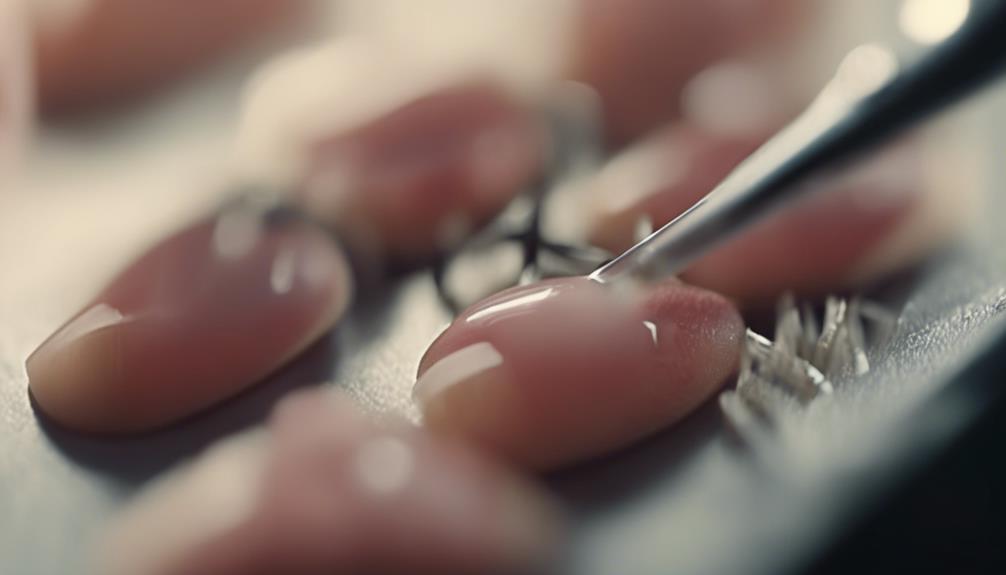
Prolonged use of fake nails can result in the weakening of the nail bed, compromising the overall health and strength of natural nails. This weakening occurs due to the constant pressure and weight applied to the natural nails by the artificial extensions. As a consequence, the nail bed, which is essential for the growth and nourishment of nails, can become thin and fragile, leading to potential long-term damage. To prevent such weakening, it is crucial to prioritize nail care and allow natural nails to breathe and recover adequately between fake nail applications. Additionally, using nourishing nail oils and moisturizers can help strengthen the nail bed and promote overall nail health. Proper nail care routines, such as regular trimming, filing, and avoiding harsh chemicals like acetone from nail polish removers, can also contribute to maintaining strong and healthy nails.
| Nail Polish | Nail Care |
|---|---|
| Contains chemicals that may weaken nails | Essential for maintaining nail health |
Bacterial and Fungal Infections
Continued use of fake nails can lead to an increased risk of bacterial and fungal infections on the nails and surrounding skin due to the trapped moisture and warmth created underneath the artificial extensions. The environment under fake nails is ideal for the growth of harmful microorganisms. To prevent such infections, maintaining proper hygiene practices is crucial. Regularly cleaning and drying the nails, especially underneath the fake extensions, can help reduce the risk of infections. Additionally, ensuring that the nails are not continuously covered with artificial nails can also aid in preventing bacterial and fungal growth.
Nail care is another essential aspect to consider in avoiding infections. Properly applying and removing fake nails, as well as giving the natural nails time to breathe in between applications, can contribute to maintaining healthy nails and skin. It's important to be mindful of any changes in the nails or surrounding skin, such as discoloration, swelling, or pain, as these could be signs of an infection that requires prompt attention. By following good hygiene practices and prioritizing nail care, the risk of bacterial and fungal infections associated with fake nails can be minimized.
Incorrect Removal Techniques

Improper removal methods of fake nails can significantly damage the natural nail bed and surrounding skin, leading to long-term consequences. Nail care is essential not only during the application of fake nails but also during the removal process. Using incorrect removal techniques, such as forcefully pulling off the fake nails or using harsh chemicals, can weaken the natural nails and cause them to become brittle and prone to breakage. These practices also increase the risk of infections, as they can create tears or micro-injuries in the nail bed where bacteria and fungi can thrive.
Hygiene practices play a crucial role in preventing damage during fake nail removal. It is important to properly clean and disinfect tools before using them and to avoid sharing tools to prevent the spread of infections. Additionally, gently soaking the fake nails in acetone or using specialized nail polish removers designed for fake nails can help dissolve the adhesive without causing excessive damage to the natural nails. By following proper nail care and hygiene practices, individuals can minimize the risk of damaging their nails when removing fake nails.
Frequently Asked Questions
Can Wearing Fake Nails Cause Long-Term Damage to the Nail Bed?
Wearing fake nails can potentially cause long-term damage to the nail bed if not managed properly. To maintain nail health, ensure hydration, opt for professional removal, and practice appropriate aftercare to minimize potential negative effects.
Are There Any Alternative Options to Fake Nails That Don't Damage the Natural Nails?
Embark on a journey to nail perfection with innovative alternatives like nail wraps, offering a chic shield for your nails. Discover safe options in gel manicures, bringing forth a realm of creativity while preserving the health of your natural nails.
How Can One Prevent Bacterial and Fungal Infections When Wearing Fake Nails?
To prevent bacterial and fungal infections while wearing fake nails, prioritize nail care and hygiene. Regularly clean and moisturize your nails and hands. Use proper techniques for nail polish removal to avoid damaging the natural nail bed.
Is It Possible for the Lack of Oxygen to Natural Nails to Result in Permanent Damage?
The impact of oxygen deprivation on natural nails can be exaggerated, potentially leading to permanent damage if prolonged. Prioritizing nail health and ensuring adequate oxygen exposure can mitigate such risks, fostering an environment conducive to optimal nail condition.
What Are the Signs That Indicate Your Natural Nails Are Being Weakened by Wearing Fake Nails?
Signs of weakened natural nails from fake nails include brittleness, discoloration, and peeling. Remedy with nail strengthening treatments, proper grooming tips, hydration, and cuticle care. Seek professional advice to maintain healthy nails amidst beauty enhancements.
Conclusion
In conclusion, fake nails can damage natural nails due to their chemical composition, lack of oxygen, weakening of the nail bed, and risk of infections.
For example, a hypothetical scenario could involve a person experiencing nail bed weakening and fungal infection after repeatedly wearing fake nails without proper care and maintenance.
It is important to be aware of the potential risks and take precautions to protect the health of your natural nails.

